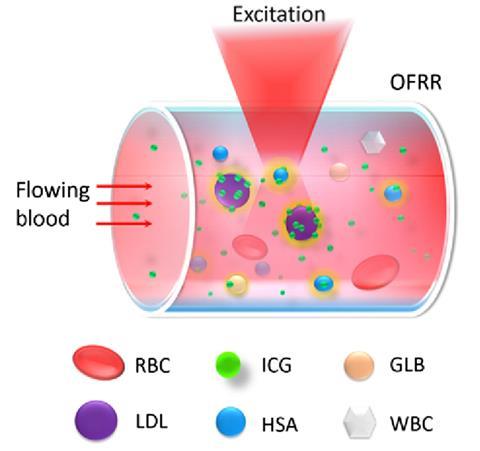Optofluidic lasers may inject life into in vivo monitoring of blood components

Drawing out cellular information from human blood can be a murky business. But scientists in the US have now turned a whole blood sample into a laser light beacon, offering researchers a clear picture of how prospective drugs can affect blood cells.
Research groups are often in the dark when it comes to monitoring biological molecules in blood samples. When forced to fluoresce, sample signals are often weak and eliciting any information is an arduous process.
Yu-Cheng Chen and his colleagues at the University of Michigan have now boosted these faint spectral signals by forcing a blood sample to lase. Doping the sample with a fluorescent dye that binds to lipoproteins, which carry lipids in blood, the team exposed it to a pulsed laser within a reflective cavity.
The so-called blood laser stimulates light emission from these tagged molecules, with the reflected signal giving vital information on each component in blood. These optofluidic technologies may complement well-established diagnostic tools such as fluorescence microscopy, according to the researchers.
The team also posit that reflective nanoparticles could be injected into human tissue to open the door to in vivo monitoring.
References
Y-C Chen, Q Chen and X Fan, Optica, 2016, 3, 809 (DOI: 10.1364/OPTICA.3.000809)












No comments yet